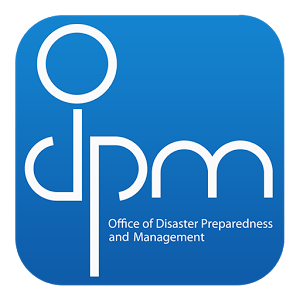Tsunamis
What is a Tsunami?
Tsunamis are deadly coastal hazards that everyone should prepare for. A tsunami is a series of gigantic waves caused by earthquakes, underwater slump (landslides) or undersea volcanic eruptions (NOAA). This deadly hazard can cause extensive deaths, injuries, damage and destruction. Waves emanating from a Tsunami can reach as high as 100 feet, destroying coastlines and inundating coastal communities leading to economic and ecological losses as well as death.
In the Caribbean, tsunamis have had a small impact when compared to the effects of hazards such as hurricanes, tropical storms, flooding, landslides, earthquakes and volcanic eruptions.
UWI Seismic also noted that tsunamis affecting the Eastern Caribbean including Trinidad and Tobago may most likely occur as a result of shallow earthquakes (<50km in depth) with magnitudes greater than 6.5 on the Richter Scale. Tsunamis caused by large volcanic eruptions at or below sea level also pose a threat.
Although Trinidad and Tobago has not experienced a tsunami in recent times, it is critical for all persons to know the risks they pose and how to be prepared in the event one is encountered. In September 2005, a series of large swells inundated several beaches in Trinidad and Tobago which resulted in damages to stalls and small crafts along the coast.
Coastal communities are also special places that many persons and families call home and are also a source of income for many fisher folk, marine industries and businesses. However, some of these communities are also vulnerable to tsunamis and everyone should be prepared for this coastal hazard.
Before, After and During a Tsunami
Before a Tsunami | During a Tsunami | After a Tsunami |
Learn the warning signs of a tsunami and ensure that family members can identify these signs as well. | In the event of an earthquake, learn and practise the “Drop Cover Hold” (DCH) technique.
| If you are outside of the affected area, stay there until the authorities declare it safe to return. |
A strong earthquake | If you are in a boat, face the direction of the waves and head further out to sea. |
|
A rapid withdrawal of sea levels that exposes the ocean floor, reefs and fishes. | If you are in harbour, move inland as quickly as possible. |
|
A loud roar coming from the ocean; tsunami survivors have described this as the sound of an oncoming freight train. | If you notice any tsunami warning signs, evacuate immediately and get as far inland as possible or to higher ground. Do not wait. |
|
Animals acting strangely |
|
|
Know your tsunami evacuation routes. |
|
|
Practise your evacuation plan regularly and map the routes out of your home, school and place of work. |
|
|
Ensure that you choose a safe place for you and your family to meet up, that is inland. |
|
|
Create a family communication plan. |
|
|
Carry a family photo with you at all times. |
|
|
Warning Signs
- A strong earthquake.
- A rapid withdrawal of sea levels that exposes the ocean floor, reefs and fishes.
- A loud roar coming from the ocean; tsunami survivors have described this as the sound of an oncoming freight train.
- Animals acting strangely.
Preparing for Tsunamis
- Learn the warning signs of a tsunami and ensure that family members can identify these signs as well.
- In the event of an earthquake, learn and practise the “Drop Cover Hold” (DCH) technique.
- Know your tsunami evacuation routes.
- Practise your evacuation plan regularly and map the routes out of your home, school and place of work.
- Create a family communication plan.
- Ensure that you choose a safe place for you and your family to meet up, that is inland.
- Carry a family photo with you at all times.
Here are some tips on how you, your family and your community can protect yourselves:
- If you feel an earthquake, use DCH to protect yourself from possible injury. If you are at the beach, along the coast or in a low-lying area, DCH and as soon as the shaking stops get to higher ground, at least 100 meters above sea level.
- If you notice any tsunami warning signs, evacuate immediately and get as far inland as possible or to higher ground. Do not wait.
- Evacuation routes are often marked by a wave with an arrow in the direction of higher ground.
- If you are in a boat, face the direction of the waves and head further out to sea.
- If you are in harbour, move inland as quickly as possible.
- If you are outside of the affected area, stay there until the authorities declare it safe to return


